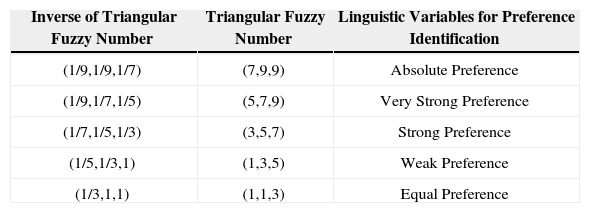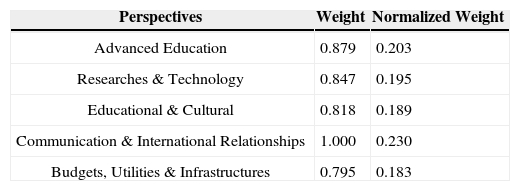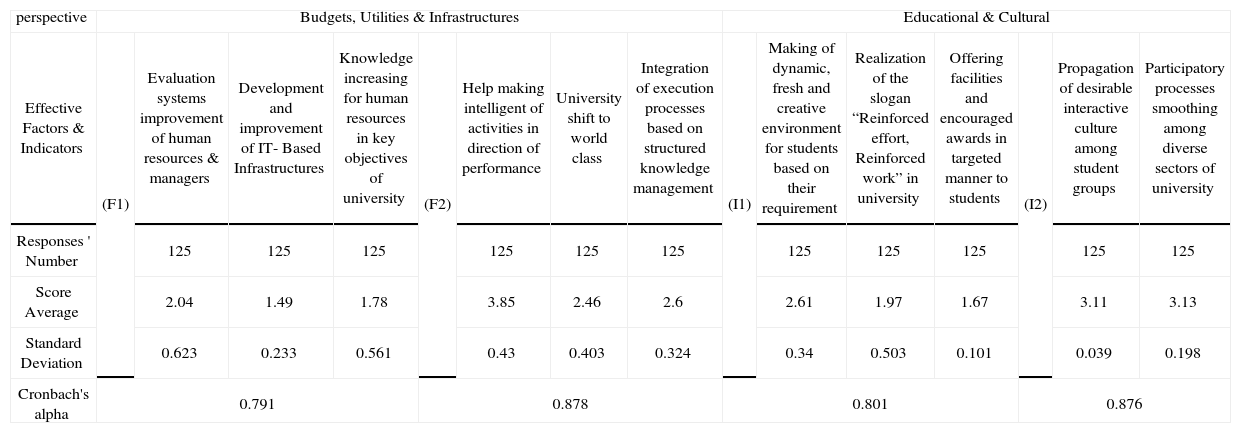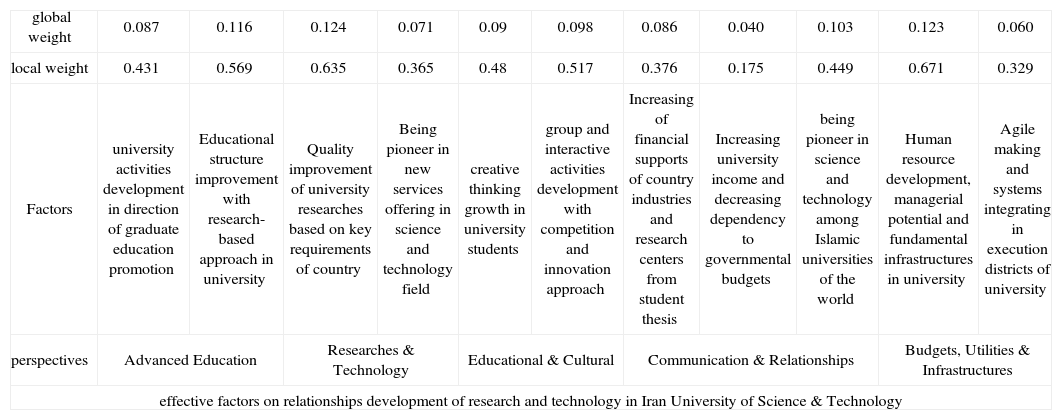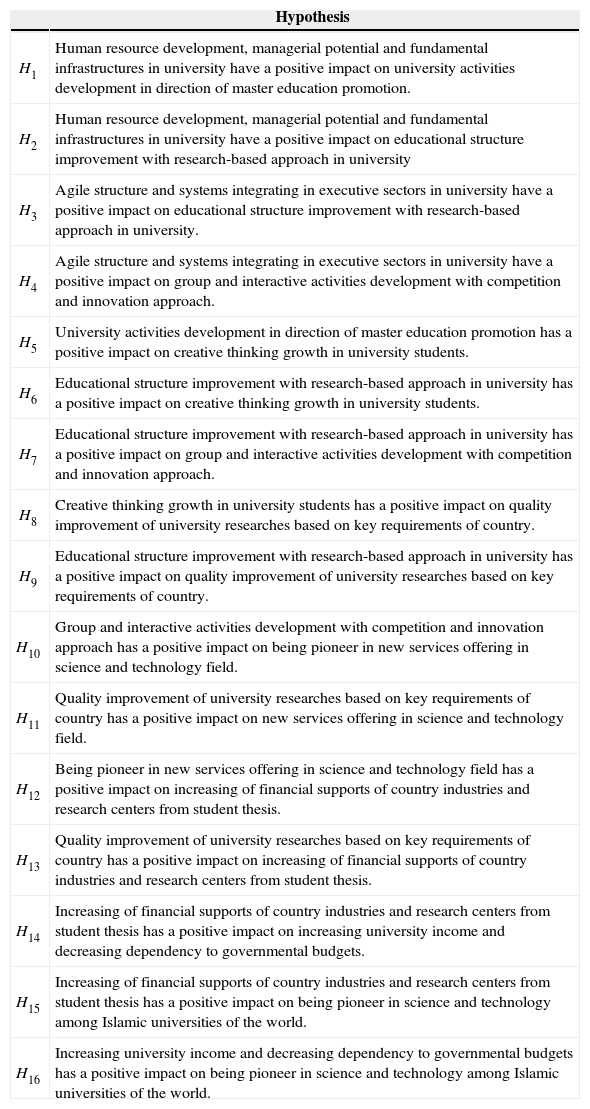The main aim of this paper is to investigate the causal relationships among science and technology indices used by universities. This is investigated using workflow automation and interactive planning in order to take control of competitive environment, and consequently to enhance the adaption rate of universities to uncontrolled changes. The science and technology indices were categorized into five domains of communication and international relationships, research and technology, education and culture, postgraduate education, budgets and utilities and infrastructures. The indices of Iran University of science and technology were first evaluated according to concepts of interactive planning and intelligent agents. These indices are research-based, and the most important ones were identified in each field according to experts' opinion. The conceptual model was then designed.
In an arena, which entails fundamental change as an invariable maxim, issues such as university, science and technology, research and development and education require special attention. The survival of academic centers depends on continuous efforts to adapt to continuous developments and on relentless endeavors to achieve an appropriate status consistent with their general and particular objectives. This depends on the goals and status of these institutions in a competitive arena. Future orientations may include globalization plan, tendency towards concentrated activities, development of IT technology, more demands for research projects, increases in the number of researchers, promotion of social welfare, implementation of information communities by governments and increases in the number of academic centers. It is worth mentioning that the development of academic centers are no longer peculiar to some certain nations; rather any society, which is developing consistent with simultaneous growth of scales and restriction of social processes as well as concentration of knowledge within the society and the consequent prevalence of scholarship, needs to develop a plan of its future scientific and research centers. Drawing a unified academic sketch requires a unified planning system and adequate policy-making, which directs the management towards a clear road based on the overall objectives.
Achieving a high performance in offering intelligent services does not solely depend on the efficiency of service attributes; rather it relies on the added value in offering adequate services consistent with changes in the academic world and on how to deal with these changes. The aspirations for efficient performance have led to a shift from traditional to interactive planning as a dominant approach to developing intelligent academic centers. Interactive planning systems are employed to direct organizational attention to strategic uncertainty and to provide leverage to adapt the strategy to variations in the competitive market [1].
Business process management, which is also called workflow management, seeks to facilitate the implementation of performance management so as to fulfill system requirements [2].
The present study aims to design a cause-effect process to support different macro levels of planning in universities using multivariate analysis methods such as path analysis. To this end, the approach proposed by Burney and colleagues was drawn upon to analyze the organizational factors [3]. Since Burney and colleagues' approach is devised according to traditional planning in non-competitive conditions, this system was incorporated into the two approaches of interactive planning and intelligent agents to serve the purposes of the present study.
The concepts of interactive planning and intelligent agents were first elaborated upon, followed by the identification of agents in making cause-effect relations that lend themselves to statistical analysis. The results and conclusion of the study were then presented below.
2Interactive planning and intelligent agentsSeveral companies have successfully employed business process management, which broadly seeks to facilitate the implementation of performance management to fulfill system requirements. However, due to its low flexibility in establishing effective interaction with business activities, scholars are investigating technological alternatives. Software agent technology can increase flexibility and manipulation of computational components and create a flexible mechanism. Automated agent is a goal-oriented, automatic software entity which may work in coordination with other factors when required [4,5].
All business managers may experience uncertainty in informed strategic choices. Uncertainty usually results from the difference between the information required for successful fulfillment of a task and the information already available. Strategic uncertainty relates to variations in competitive dynamics and internal competencies the perception of which is necessary for a successful conduct of business. Still, strategic uncertainty differs from key performance factors. Key performance factors are identified through analysis and incorporation into objectives and programs. On the contrary, instead of doing a perfunctory review to assure the launching of plans into their original path, strategic uncertainty seeks new information and concepts [6]. Considering strategic uncertainty, mangers may draw upon interactive control processes to search for new opportunities, to enhance impetus for gaining experience and quick reaction and to maintain control on what may turn out to be a turbulent process [7].
The recognition of strategies may be the main reason why managers tend to use interactive control systems. They may use these systems to learn strategic uncertainties and to launch new activities. Indeed, these systems help build signs and interact with a complicated environment [7].
3Designing path analysis process based on intelligent agents and interactive planningCause-effect relations take on considerable importance since they enable the management to measure the performance based on nonfinancial criteria despite traditional approaches used to predict the organization's financial efficiency. Besides, a cause-effect relation requires some time interval between the cause and its effect. Therefore, it may be a difficult task to establish a true relation between all perspectives. Several procedures have been employed to establish these relations including using key performance indicators and mathematical modeling, though the use of multivariate analysis methods such as path analysis may be more appropriate here. However, little attention has so far been paid to this process, which can be considered as the most important component in making a sketch of promising paths to determine the agents. Most organizations solely concentrate on the components which are needed to make a sketch of organizational scorecard. However, considering the day-to-day variations and dynamicity of environment, appealing to interactive approaches consistent with intelligent planning is a requisite for the identification of these agents. In this section, we seek to design an intelligent process based on the structure of path analysis. This design comprises two components including:
- •
Activity provider
- •
Activity recipient
Each component has its own service management system. Thus, management systems for these components need to do all respective activities (from the time of application to service delivery) coordinately.
The proposed design comprises two layers including:
- •
Intelligent workflow management
- •
Competitive management agents
Workflow refers to computer facilities in or automation of either partial or total business processes [8]. With workflow automation, it would be easier to make organizational changes and reengineering, create new processes to generate more rapid responses to environmental variations, and align with emergent trends. An intelligent workflow management system consists of the following components:
- •
Tools for intelligent design of workflow.
- •
Tools for identification of interactive processes.
- •
Driving engine of workflow.
- •
Data storage and data banks (knowledge management) based on intelligent agents.
Agent applications may help carry out the tasks optimally and facilitate decision-making. Competitive interactive agents can be designed based on interactive approach so as to possess the following characteristics [4].
In intelligent management, an agent should be interactive and dynamic in order to ensure coordination consistent with environmental conditions and variations. Such interactive capability relates to the exchange of information required by any organization's internal structures. Every agent should be capable of making effective decisions through interaction with other agents. Agents should be persistent and responsive to variations so that they may not yield unless they arrive at the desirable answer. In the proposed design, customizable agents consistent with interactive planning agents were used so that the design may help control the processes in a dynamic and continuous manner to improve the efficiency of performance. In this regard, two types of agents were used:
- •
Agents in workflow crisis management in competitive circumstances.
- •
Agents executing intelligent activities
Each type has its specific operational responsibility in intelligent management system. The first type works as the representative of management and coordinator of processes and the second type assigns the roles as executors. As illustrated in Figure 1, agents in intelligent workflow management comprised five components including:
- •
User interface agent.
- •
Coordinating agent.
- •
Internal control agent.
- •
Environmental data management agent.
- •
Intelligent decision-making agent.
The process of fuzzy hierarchical analysis was first proposed by Saaty in 1980 [9]. As an extension of hierarchical analysis, this process was developed to solve fuzzy hierarchical problems. The process follows three steps as follows.
Step 1Defining decision-making criteria & building a hierarchyBased on the characteristics of the problem, the layer zero represents the final goal to analyze each attribute and build a hierarchical structure. The first layer represents significant decision-making criteria, which influence the final goal. The underlying layers address the significant sub-criteria of the first layer. The last layer indicates potential alternatives.
Step 2Developing a matrix of paired comparisonsIn this step, criteria, sub-criteria and alternatives are attached weights as a function of their importance for corresponding elements in higher-order layers. In this regard, the process of hierarchical analysis employs paired comparisons to attach weights and assign ratings. Accordingly, analyzers can focus only on two factors at a time. Consistent with layered structure developed in Step 1, the significant decision-making criteria are converted into a conceptual model so as to be used in developing statistical questionnaires. Subsequently, certain scales are used to convert the result of questionnaires into fuzzy matrices of paired comparisons. The scales are illustrated in Table 1 and Figure 2. Table 1 illustrates the scales of triangular fuzzy numbers. Figure 2 illustrates the membership function of linguistic variables for comparison criteria.
Fuzzy numbers corresponding to preferences in pair wise comparison
| Inverse of Triangular Fuzzy Number | Triangular Fuzzy Number | Linguistic Variables for Preference Identification |
|---|---|---|
| (1/9,1/9,1/7) | (7,9,9) | Absolute Preference |
| (1/9,1/7,1/5) | (5,7,9) | Very Strong Preference |
| (1/7,1/5,1/3) | (3,5,7) | Strong Preference |
| (1/5,1/3,1) | (1,3,5) | Weak Preference |
| (1/3,1,1) | (1,1,3) | Equal Preference |
Once the decision-making matrix is developed, preference vector can be calculated to attach weights to the matrix. This is the specific normalized vector of the matrix.
In this study, we use a method proposed by Wu and colleagues in 2009 to calculate the weights. They proposed a multi-criteria fuzzy decision-making approach to evaluate the performance of banks [10]. We skip further elaboration on this method in order to avoid the bulkiness of the content.
Having set the evaluation criteria, we considered the importance of prioritizing the agents. Consistent with the main decision-making criteria, a questionnaire was developed and administered to some experts whose responses helped develop fuzzy matrices of paired comparisons. In this regard, the questionnaires were administered to 25 experts (5 experts for each perspective). In total, a number of 125 matrices of paired comparisons were prepared and outputs were extracted. The weights of matrices of paired comparisons and normalized weights relative to the target were obtained and illustrated in Table 2 that provides a comprehensive illustration of the weight of every aspect, the weight of every indicator in each aspect and the relative weight of every indicator among other indicators. Moreover, Table 4 illustrates model perspective weights and causal indicators extracted from Fuzzy AHP method.
ordinary & normalized weight extracted from Fuzzy AHP model
| Perspectives | Weight | Normalized Weight |
|---|---|---|
| Advanced Education | 0.879 | 0.203 |
| Researches & Technology | 0.847 | 0.195 |
| Educational & Cultural | 0.818 | 0.189 |
| Communication & International Relationships | 1.000 | 0.230 |
| Budgets, Utilities & Infrastructures | 0.795 | 0.183 |
Effective factors and indicators in relationships design of science and technology development model in Iran University of Science & Technologies
| perspective | Budgets, Utilities & Infrastructures | Educational & Cultural | |||||||||||||
| Effective Factors & Indicators | (F1) | Evaluation systems improvement of human resources & managers | Development and improvement of IT- Based Infrastructures | Knowledge increasing for human resources in key objectives of university | (F2) | Help making intelligent of activities in direction of performance | University shift to world class | Integration of execution processes based on structured knowledge management | (I1) | Making of dynamic, fresh and creative environment for students based on their requirement | Realization of the slogan “Reinforced effort, Reinforced work” in university | Offering facilities and encouraged awards in targeted manner to students | (I2) | Propagation of desirable interactive culture among student groups | Participatory processes smoothing among diverse sectors of university |
| Responses ' Number | 125 | 125 | 125 | 125 | 125 | 125 | 125 | 125 | 125 | 125 | 125 | ||||
| Score Average | 2.04 | 1.49 | 1.78 | 3.85 | 2.46 | 2.6 | 2.61 | 1.97 | 1.67 | 3.11 | 3.13 | ||||
| Standard Deviation | 0.623 | 0.233 | 0.561 | 0.43 | 0.403 | 0.324 | 0.34 | 0.503 | 0.101 | 0.039 | 0.198 | ||||
| Cronbach's alpha | 0.791 | 0.878 | 0.801 | 0.876 | |||||||||||
| perspective | Advanced Education | Researches & Technology | |||||||||||
| Effective Factors & Indicators | (E1) | Facilitate participation of elites in graduate education | Correction of student pyramid by objective of shift toward fundamental and basis education | (E2) | Help to implementation of updated educational systems | Shifting to market-based education | Changing in measurement and evaluation processes of education | (T1) | Making research & development in targeted manner according to industry requirement | Help to making strategic association for knowledge-based companies in order to presence in competition market | (T2) | Support from knowledge-based companies in knowledge & technology area | Support from active companies in university incubators' |
| Responses 'Number | 125 | 125 | 125 | 125 | 125 | 125 | 125 | 125 | 125 | ||||
| Score Average | 2.67 | 3.23 | 3.21 | 2.92 | 3.22 | 2.44 | 2.13 | 3.12 | 2.66 | ||||
| Standard Deviation | 0.352 | 0.45 | 0.014 | 0.047 | 0.031 | 0.303 | 0.396 | 0.325 | 0.433 | ||||
Model perspectives weights and causal indicators extracted from Fuzzy AHP method
| global weight | 0.087 | 0.116 | 0.124 | 0.071 | 0.09 | 0.098 | 0.086 | 0.040 | 0.103 | 0.123 | 0.060 |
| local weight | 0.431 | 0.569 | 0.635 | 0.365 | 0.48 | 0.517 | 0.376 | 0.175 | 0.449 | 0.671 | 0.329 |
| Factors | university activities development in direction of graduate education promotion | Educational structure improvement with research-based approach in university | Quality improvement of university researches based on key requirements of country | Being pioneer in new services offering in science and technology field | creative thinking growth in university students | group and interactive activities development with competition and innovation approach | Increasing of financial supports of country industries and research centers from student thesis | Increasing university income and decreasing dependency to governmental budgets | being pioneer in science and technology among Islamic universities of the world | Human resource development, managerial potential and fundamental infrastructures in university | Agile making and systems integrating in execution districts of university |
| perspectives | Advanced Education | Researches & Technology | Educational & Cultural | Communication & Relationships | Budgets, Utilities & Infrastructures | ||||||
| effective factors on relationships development of research and technology in Iran University of Science & Technology | |||||||||||
Table 3 illustrates the effective factors and indicators in establishing the relation between science and technology development in Iran University of Science & Technology. This table shows the effective factors in every aspect. It also describes the indicators pertaining to every factor as well as the number of respondents, mean scores, standard deviation and Cronbach alpha coefficients of every effective factor in each aspect.
4Analysis of cause-effect relationsHaving investigated the performance of universities, different aspects of evaluation were first addressed. Accordingly, cause-effect relations among the five perspectives of intelligent workflow management were analyzed. A cause-effect relation requires some time interval between the cause and its effect. Thus, it may be difficult to establish a true relationship between all perspectives. In the first place, one needs to develop an initial model based on some presuppositions. To this end, a questionnaire was developed to examine strategic issues relative to each perspective. For the purposes of validation, the questionnaire was first administered to 5 experts (one expert for each perspective), and subsequently the reliability coefficient of the questionnaire was calculated to be 0.82 using Cronbach alpha formula. Second, the questionnaire was administered to 30 experts (6 experts for each perspective), and eventually the default model was developed according to strategic issues. The hypotheses, which were investigated in this research, are illustrated in
Model Hypotheses
| Hypothesis | |
|---|---|
| H1 | Human resource development, managerial potential and fundamental infrastructures in university have a positive impact on university activities development in direction of master education promotion. |
| H2 | Human resource development, managerial potential and fundamental infrastructures in university have a positive impact on educational structure improvement with research-based approach in university |
| H3 | Agile structure and systems integrating in executive sectors in university have a positive impact on educational structure improvement with research-based approach in university. |
| H4 | Agile structure and systems integrating in executive sectors in university have a positive impact on group and interactive activities development with competition and innovation approach. |
| H5 | University activities development in direction of master education promotion has a positive impact on creative thinking growth in university students. |
| H6 | Educational structure improvement with research-based approach in university has a positive impact on creative thinking growth in university students. |
| H7 | Educational structure improvement with research-based approach in university has a positive impact on group and interactive activities development with competition and innovation approach. |
| H8 | Creative thinking growth in university students has a positive impact on quality improvement of university researches based on key requirements of country. |
| H9 | Educational structure improvement with research-based approach in university has a positive impact on quality improvement of university researches based on key requirements of country. |
| H10 | Group and interactive activities development with competition and innovation approach has a positive impact on being pioneer in new services offering in science and technology field. |
| H11 | Quality improvement of university researches based on key requirements of country has a positive impact on new services offering in science and technology field. |
| H12 | Being pioneer in new services offering in science and technology field has a positive impact on increasing of financial supports of country industries and research centers from student thesis. |
| H13 | Quality improvement of university researches based on key requirements of country has a positive impact on increasing of financial supports of country industries and research centers from student thesis. |
| H14 | Increasing of financial supports of country industries and research centers from student thesis has a positive impact on increasing university income and decreasing dependency to governmental budgets. |
| H15 | Increasing of financial supports of country industries and research centers from student thesis has a positive impact on being pioneer in science and technology among Islamic universities of the world. |
| H16 | Increasing university income and decreasing dependency to governmental budgets has a positive impact on being pioneer in science and technology among Islamic universities of the world. |
Following the analysis and identification of cause-effect relations in the development of the organizations of Iran's Ministry of Industries and Mines, we appealed to experts in each organization in order to identify the most applicable operational indicators in every aspect of balanced scorecard. To this end, firstly, individual interviews were conducted with experts in each organization. Then library studies were carried out to extract indicators. Eventually, using these sources of data, a questionnaire was developed to examine the effect and operationalizability of these indicators. Figure 3 illustrates the causal relations among the factors related to each aspect and a number of 16 hypotheses are linked together using arrows.
Following its development, the questionnaire was administered to a number of 10 participants randomly in order to examine the reliability of the scale in each perspective. Cronbach alpha formula was then run to examine the reliability coefficient of the questionnaire, which yielded a reasonable reliability index. Then the questionnaire was administered to 30 participant experts in the field. The experts were to assess the significant agents based on two attributes, namely, the degree of effectiveness and the status quo. Table 3 illustrates the mean and standard deviation of the questionnaire scores. In the table developed for measuring the effectiveness of agents, number 1 refers to low-impact agents; number 2 addresses agents with moderate impact; and number 3 refers to high-impact agents. In order to examine the status quo of effective agents in each perspective, number 1 refers to very weak status of universities, number 2 captures weak status, number 3 addresses common status, number 4 indicates good status and number 5 refers to excellent status of universities relative to every agent. Figure 4 shows the reciprocal effect of factors pertaining to each aspect.
5ConclusionBalanced Scorecards are a set of indicators, which include financial, customer, internal processes, growth and learning. Path analysis was used for the purpose of the process. The aim of this research was to evaluate causal relationships among performance indicators in Iran University of Science & Technology in the BSC structure. In designing the conceptual model, the dominant approach adopted was an interactive planning to use the competitive intelligence for the university in the fields of science and technology. Relations among these factors were prioritized and validated using appropriate statistical techniques. This present findings can help managers realize the key success indices and identify the critical paths as they can intelligently consider the interplay environmental changes related to their strategies and goals.








